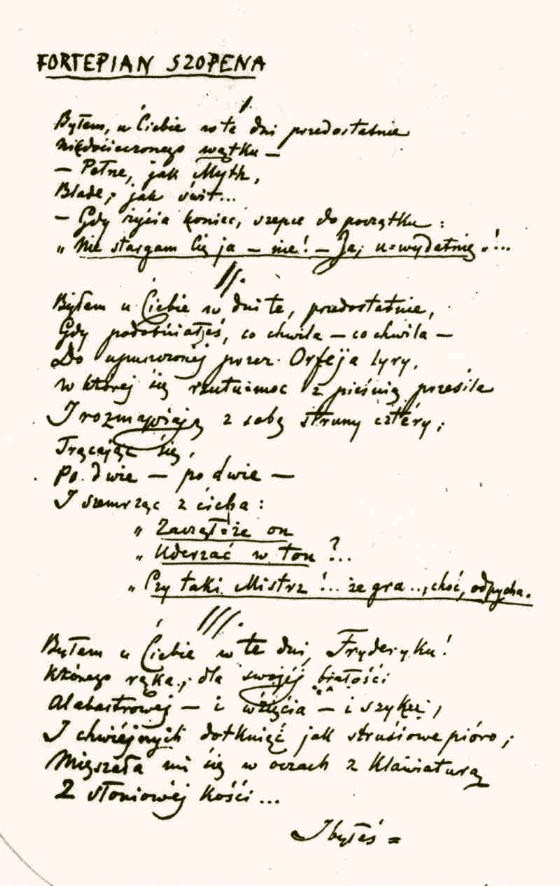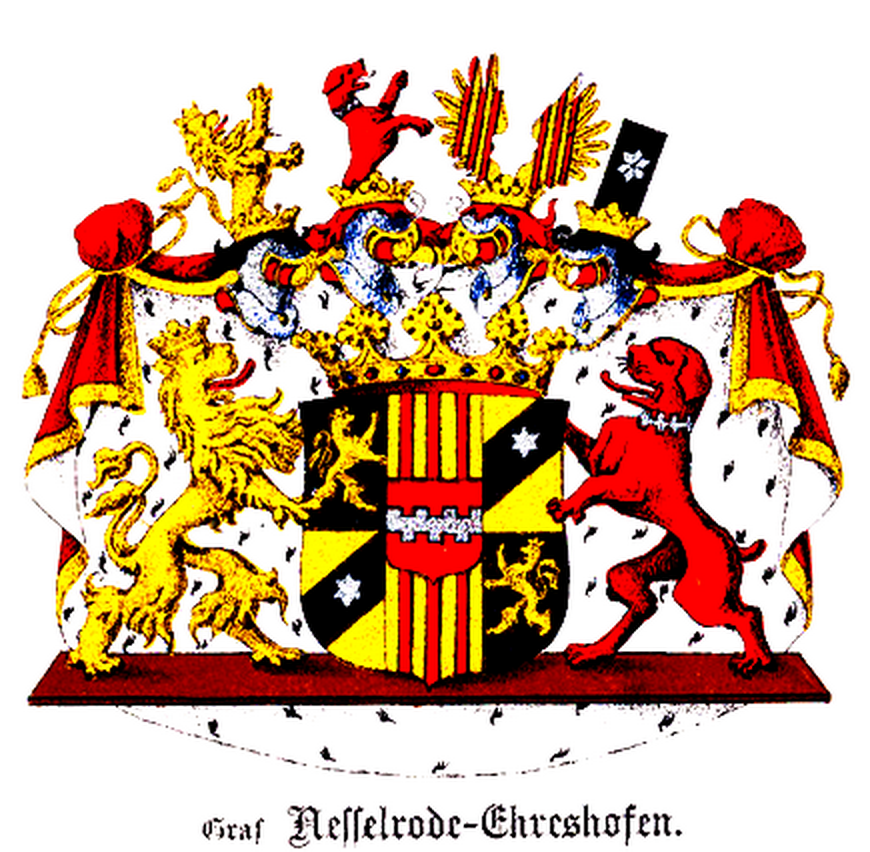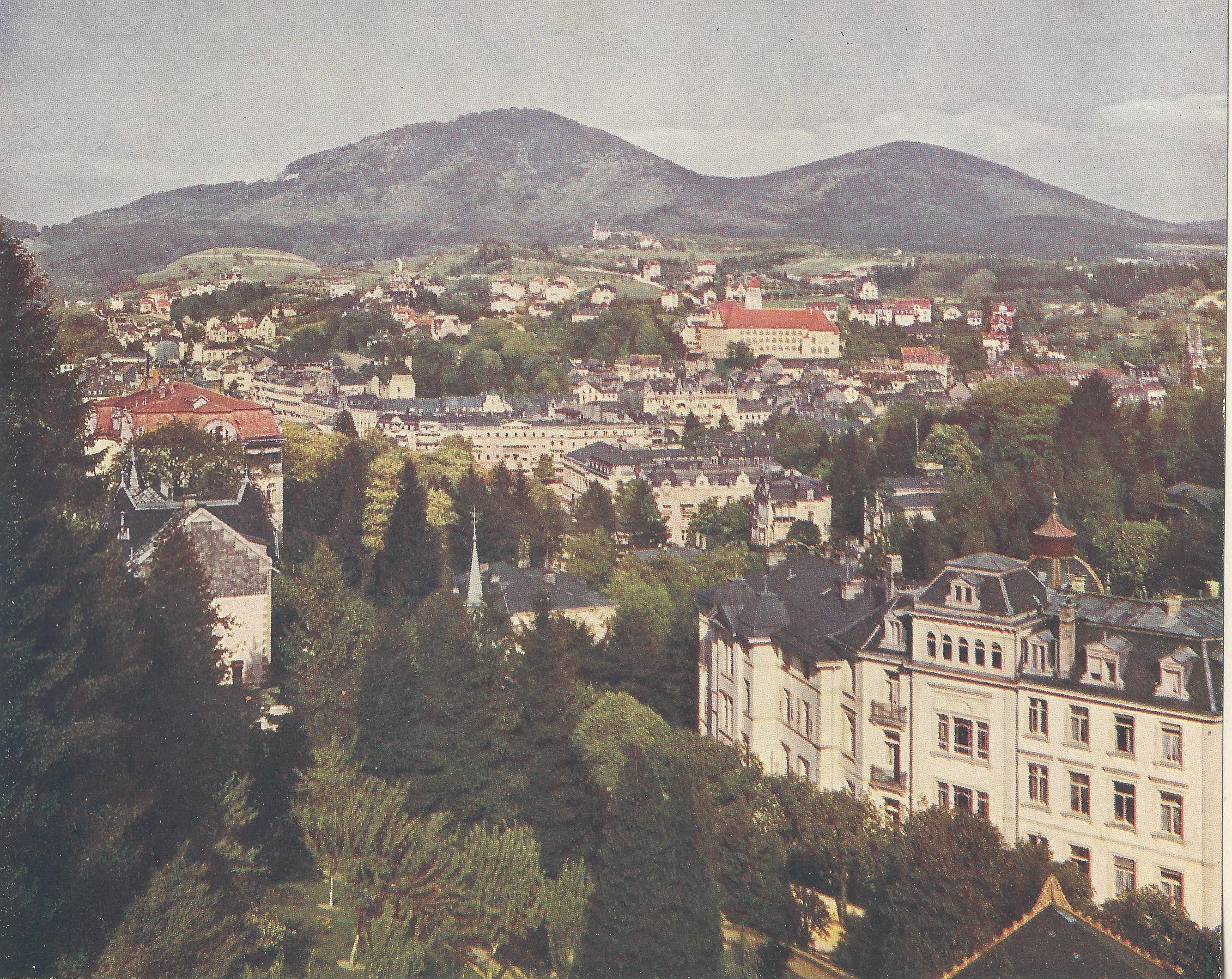|
Marie Kalergi
Maria Kalergis von Nesselrode-Ereshoven (7 August 1822 Warsaw – 22 May 1874, Warsaw) was a Polish-German noblewoman, pianist, salon hostess and patron of the arts. Life Countess Maria von Nesselrode-Ehreshoven was the daughter of the German count in the Russian service, Karl Friedrich Joseph von Nesselrode-Ehreshoven (1786-1868), and his wife, Polish noblewoman Tekla von Górska (1793-1851). At the age of seventeen Maria von Nesselrode married Jan Kalergis, a rich landowner of Greek Cretan noble descent, who was much older and proved to be of a jealous disposition. Although they had a daughter, Marie, born in Saint Petersburg in 1840, less than a year after their wedding they agreed to separate. Despite several attempts to overcome their aversion towards each other, they continued living separately, without divorcing, until Jan's death. He ensured Maria had a comfortable life. While the division of their assets was in dispute, she was able to tour Europe, including Sai ... [...More Info...] [...Related Items...] OR: [Wikipedia] [Google] [Baidu] |
Theatre Museum, Warsaw
The Theatre Museum in Warsaw is gathering collections related to the history of Polish theater, Polish and foreign theatres. In 1957-1966 it operated as a branch of the Historical Museum of Warsaw, Warsaw Historical Museum. Since 1965 it has been operating in the building and structure of the Grand Theatre, Warsaw, Grand Theatre, in interiors designed by Mieczysław Piprek. The museum was co-founded by Ewa Jeglińska. The museum conducts activities related to the collection and development, exhibition and educational activities. The museum's collection consists of tens of thousands of objects (both museology and archives) and is divided into a number of departments: sculpture, painting, drawing and graphic arts, souvenirs (related to outstanding people of the theatre), stage designs, costumes, photographs, records, manuscripts and documents, posters, programs, compact prints, continuous prints, notes, negatives. The museum also has several thematic archives: Archives of the Polish ... [...More Info...] [...Related Items...] OR: [Wikipedia] [Google] [Baidu] |
Greeks
Greeks or Hellenes (; , ) are an ethnic group and nation native to Greece, Greek Cypriots, Cyprus, Greeks in Albania, southern Albania, Greeks in Turkey#History, Anatolia, parts of Greeks in Italy, Italy and Egyptian Greeks, Egypt, and to a lesser extent, other countries surrounding the Eastern Mediterranean and Black Sea. They also form a significant Greek diaspora, diaspora (), with many Greek communities established around the world.. Greek colonies and communities have been historically established on the shores of the Mediterranean Sea and Black Sea, but the Greek people themselves have always been centered on the Aegean Sea, Aegean and Ionian Sea, Ionian seas, where the Greek language has been spoken since the Bronze Age.. Until the early 20th century, Greeks were distributed between the Greek peninsula, the western coast of Asia Minor, the Black Sea coast, Cappadocia in central Anatolia, Egypt, the Balkans, Cyprus, and Constantinople. Many of these regions coincided to ... [...More Info...] [...Related Items...] OR: [Wikipedia] [Google] [Baidu] |
Das Judentum In Der Musik
"Das Judenthum in der Musik" (German for ''Judaism in Music'', but perhaps more accurately understood in contemporary language as ''Jewishness in Music''), is an antisemitic essay by composer Richard Wagner which criticizes the influence of Jews and their "essence" on European art music, arguing that they have not contributed to its development but have rather commodified and degraded it. It alleges that Jews infiltrated the music industry not through their artistic capabilities, but because of their control over financial resources. In particular it discusses the music of Jewish composers Felix Mendelssohn and Giacomo Meyerbeer, acknowledging its technical proficiency but criticizing it as lacking genuine artistic passion. According to Wagner, authentic art is rooted in immersion within the organic life of a culture, and Jews, indicated as being outsiders to this culture, are capable of only making artificial or superficial contributions. It was first published under a pseudonym ... [...More Info...] [...Related Items...] OR: [Wikipedia] [Google] [Baidu] |
Richard Wagner
Wilhelm Richard Wagner ( ; ; 22 May 181313 February 1883) was a German composer, theatre director, essayist, and conductor who is chiefly known for his operas (or, as some of his mature works were later known, "music dramas"). Unlike most opera composers, Wagner wrote both the libretto and the music for each of his stage works. Initially establishing his reputation as a composer of works in the romantic vein of Carl Maria von Weber and Giacomo Meyerbeer, Wagner revolutionised opera through his concept of the ''Gesamtkunstwerk'' ("total work of art"), whereby he sought to synthesise the poetic, visual, musical and dramatic arts, with music subsidiary to drama. The drama was to be presented as a continuously sung narrative, without conventional operatic structures like Aria, arias and Recitative, recitatives. He described this vision in a List of prose works by Richard Wagner, series of essays published between 1849 and 1852. Wagner realised these ideas most fully in the first ... [...More Info...] [...Related Items...] OR: [Wikipedia] [Google] [Baidu] |
Liszt
Franz Liszt (22 October 1811 – 31 July 1886) was a Hungarian composer, virtuoso pianist, conductor and teacher of the Romantic period. With a diverse body of work spanning more than six decades, he is considered to be one of the most prolific and influential composers of his era, and his piano works continue to be widely performed and recorded. Liszt achieved success as a concert pianist from an early age, and received lessons from the esteemed musicians Carl Czerny and Antonio Salieri. He gained further renown for his performances during tours of Europe in the 1830s and 1840s, developing a reputation for technical brilliance as well as physical attractiveness. In a phenomenon dubbed " Lisztomania", he rose to a degree of stardom and popularity among the public not experienced by the virtuosos who preceded him. During this period and into his later life, Liszt was a friend, musical promoter and benefactor to many composers of his time, including Hector Berlioz, Frédér ... [...More Info...] [...Related Items...] OR: [Wikipedia] [Google] [Baidu] |
Cyprian Norwid
Cyprian Kamil Norwid (; – 23 May 1883) was a Polish poet, dramatist, painter, sculptor, and philosopher. He is now considered one of the four most important Polish Romanticism, Polish Romantic poets, though scholars still debate whether he is more aptly described as a late Romanticism, romantic or an early modernist. Norwid led a tragic, often poverty-stricken life. He experienced mounting health problems, unrequited love, harsh critical reviews, and increasing social isolation. For most of his life he lived abroad, having left Polish lands in his twenties. Having briefly travelled across Western Europe in his youth, and briefly travelling to United States, where he worked as an illustrator, he lived chiefly in Paris, where he eventually died. Considered a "rising star" in his youth, Norwid's original, nonconformist style was not appreciated in his lifetime. Partly due to this, he was excluded from high society. His work was rediscovered and appreciated only after his death b ... [...More Info...] [...Related Items...] OR: [Wikipedia] [Google] [Baidu] |
Minister Of Foreign Affairs
In many countries, the ministry of foreign affairs (abbreviated as MFA or MOFA) is the highest government department exclusively or primarily responsible for the state's foreign policy and foreign relations, relations, diplomacy, bilateralism, bilateral, and multilateralism, multilateral relations affairs as well as for providing support, including consular services, for a country's citizens who are abroad. The entity is usually headed by a foreign minister or minister of foreign affairs (the title may vary, such as secretary of state who has the same functions). The foreign minister typically reports to the head of government (such as prime minister or president). Difference in titles In some nations, such as India, the foreign minister is referred to as the Ministry of External Affairs (India), minister for external affairs; or others, such as Brazil and the states created from the former Soviet Union, call the position the minister of external relations. In the United States, ... [...More Info...] [...Related Items...] OR: [Wikipedia] [Google] [Baidu] |
Tsar
Tsar (; also spelled ''czar'', ''tzar'', or ''csar''; ; ; sr-Cyrl-Latn, цар, car) is a title historically used by Slavic monarchs. The term is derived from the Latin word '' caesar'', which was intended to mean ''emperor'' in the European medieval sense of the term—a ruler with the same rank as a Roman emperor, holding it by the approval of another emperor or a supreme ecclesiastical official—but was usually considered by Western Europeans to be equivalent to "king". Tsar and its variants were the official titles in the First Bulgarian Empire (681–1018), Second Bulgarian Empire (1185–1396), the Kingdom of Bulgaria (1908–1946), the Serbian Empire (1346–1371), and the Tsardom of Russia (1547–1721). The first ruler to adopt the title ''tsar'' was Simeon I of Bulgaria. Simeon II, the last tsar of Bulgaria, is the last person to have held this title. Meaning in Slavic languages The title tsar is derived from the Latin title for the Roman emperors, ''c ... [...More Info...] [...Related Items...] OR: [Wikipedia] [Google] [Baidu] |
Russian Empire
The Russian Empire was an empire that spanned most of northern Eurasia from its establishment in November 1721 until the proclamation of the Russian Republic in September 1917. At its height in the late 19th century, it covered about , roughly one-sixth of the world's landmass, making it the list of largest empires, third-largest empire in history, behind only the British Empire, British and Mongol Empire, Mongol empires. It also Russian colonization of North America, colonized Alaska between 1799 and 1867. The empire's 1897 census, the only one it conducted, found a population of 125.6 million with considerable ethnic, linguistic, religious, and socioeconomic diversity. From the 10th to 17th centuries, the Russians had been ruled by a noble class known as the boyars, above whom was the tsar, an absolute monarch. The groundwork of the Russian Empire was laid by Ivan III (), who greatly expanded his domain, established a centralized Russian national state, and secured inde ... [...More Info...] [...Related Items...] OR: [Wikipedia] [Google] [Baidu] |
Karl Robert Von Nesselrode
Karl Robert Reichsgraf von Nesselrode-Ehreshoven, also known as Charles de Nesselrode (; 14 December 1780 – 23 March 1862), was a Russian diplomat of German noble descent. For 40 years (1816–1856), Nesselrode guided Russian policy as foreign minister. He was also a leading European conservative statesman of the Holy Alliance. Early life Karl was born at sea near Lisbon, Portugal into the prominent Uradel German House of Nesselrode, which originated in the Bergisches Land near the Rhine. His father Count Wilhelm Karl von Nesselrode (1724–1810), a Count of the Holy Roman Empire, served at the time as the ambassador to Portugal for the German-born Russian empress. His mother was Louise Gontard (1746–1785), whose family belonged to Huguenot noble families from Dauphiné that fled from France to Germany in 1700. In deference to his mother's Protestantism he was baptized in the chapel of the British Embassy, thus becoming a member of the Church of England. Biograph ... [...More Info...] [...Related Items...] OR: [Wikipedia] [Google] [Baidu] |
Baden-Baden
Baden-Baden () is a spa town in the states of Germany, state of Baden-Württemberg, south-western Germany, at the north-western border of the Black Forest mountain range on the small river Oos (river), Oos, ten kilometres (six miles) east of the Rhine, the border with France, and forty kilometres (twenty-five miles) north-east of Strasbourg, France. In 2021, the town became part of the transnational World Heritage Site, UNESCO World Heritage Site under the name "Great Spa Towns of Europe", because of its famous spas and architecture that exemplifies the popularity of spa towns in Europe in the 18th through 20th centuries. Name The springs at Baden-Baden were known to the Roman Empire, Romans as "" ("The Waters") and "" ("Aurelia (name), Aurelia-of-the-Waters") after M. Aurelius Severus Alexander Augustus. In modern German, "" is a noun meaning "bathing", but "Baden", the original name of the town, derives from an earlier plural, plural form of ' (Bathing, "bath"). (Modern Ger ... [...More Info...] [...Related Items...] OR: [Wikipedia] [Google] [Baidu] |






